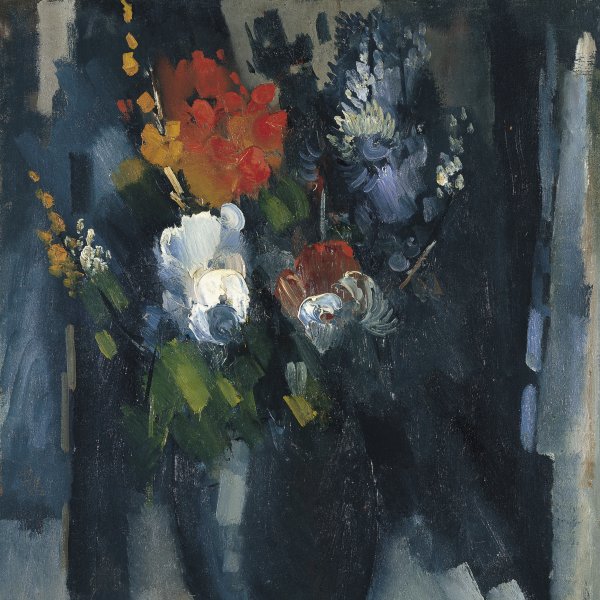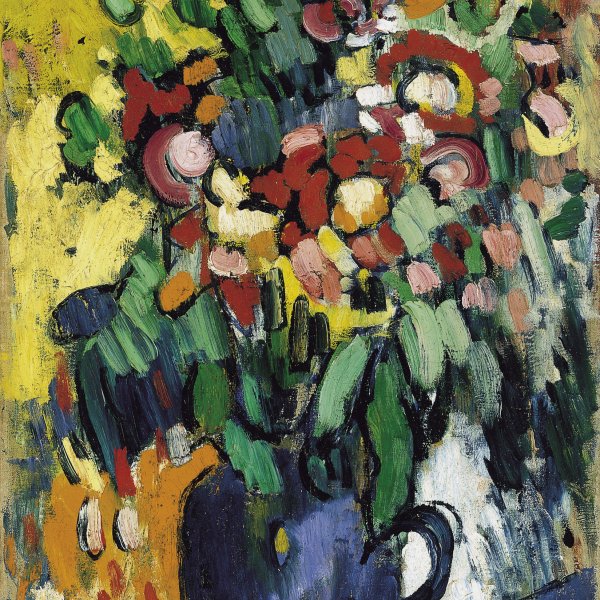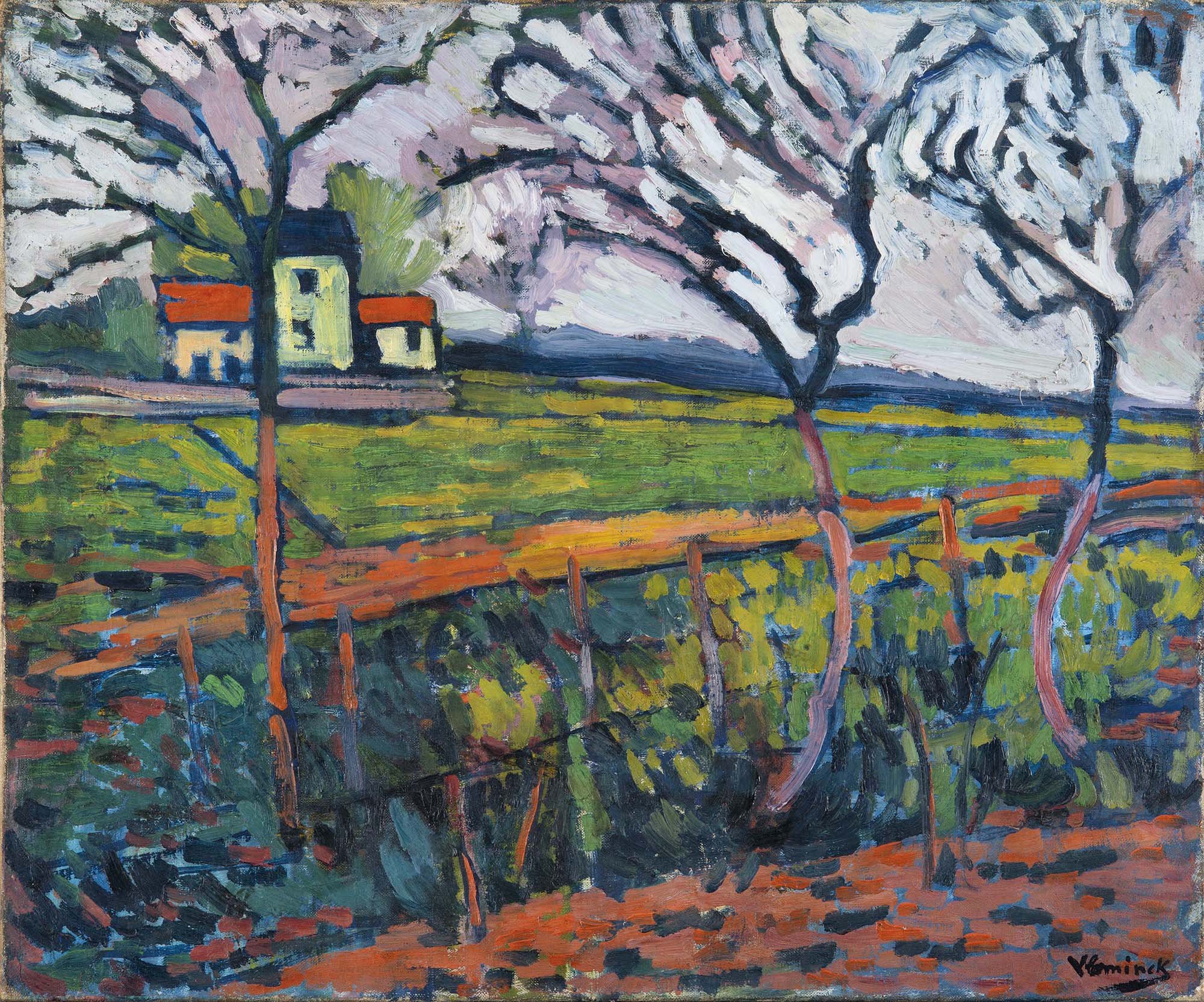Fields, Rueil
This painting represents a view of the fields in Rueil. In the foreground, three young trees and a fence; behind them, sown open fields; in the background, an isolated house outlined against a grey sky.
Vlaminck lived in Rueil from the end of 1900, sharing a studio with Derain on the island of Chatou, on the Seine, opposite Rueil. The river was for these towns, sufficiently close to Paris as to encourage brief visits, an easy popular attraction. Chatou and Rueil, as well as Argenteuil, Bougival, Le Pecq, etc., were in an area very often depicted by Impressionist painters. Chatou in particular had been the scenario of the celebrated Luncheon of the Boating Party, painted by Renoir in 1881 and belonging to the Phillips Collection.
Since their inclusion in the 1905 Salon d'Automne, Vlaminck and Derain had held a prominent place within the informal group known as the fauves. In those years Vlaminck took part in the main exhibitions of this group in Paris (Salon d'Automne and Salon des Indépendants), as well as in Brussels (La Libre Esthétique), Le Havre, etc. Whereas the Impressionist painters showed their works in galleries promoting Impressionism (particularly Bernheim-Jeune), the fauves dealt with less established galleries, such as Berthe Weill, Druet and above all Vollard. In September 1905 Vollard, who had already undertaken similar transactions with other fauve artists like Derain and Manguin, bought all the works in Vlaminck's studio for a sum of 6, 000 francs; this included his right of option to buy any future paintings for the first time. This contract enabled Vlaminck to devote himself exclusively to painting. From 1906 Derain saw increasingly more of Matisse and Picasso, whereas Vlaminck began to be isolated. In 1907 he published his third novel (Almes des mannequins) and Vollard organised his first one man show. From the end of that year, and following the steps of Matisse, Picasso, Braque and Derain, Vlaminck came closer to Cezannism and his palette abandoned the bright shades in favour of the blues and earth colours. That was the end of his fauve period.
Fields, Rueil, an undated painting which belonged to the Vollard collection, recalls that of other Chatou landscapes of around 1904 or 1905. Yet its brushstrokes are less divided and compared to those of the 1905 paintings, tend to form larger flat areas, sometimes divided by thick dark lines (without producing a systematic cloisonné like the one used by Gauguin's followers). The strong slant of the composition, with its vanishing point to the right, is typical of Vlaminck, as is the relatively low horizon (but actually quite normal) in comparison with the very high horizons of Derain, Braque and Matisse. As for the rest, the composition is soundly constructed, taking advantage and underlining the vertical rhythm of the tree trunks.
Tomàs Llorens







